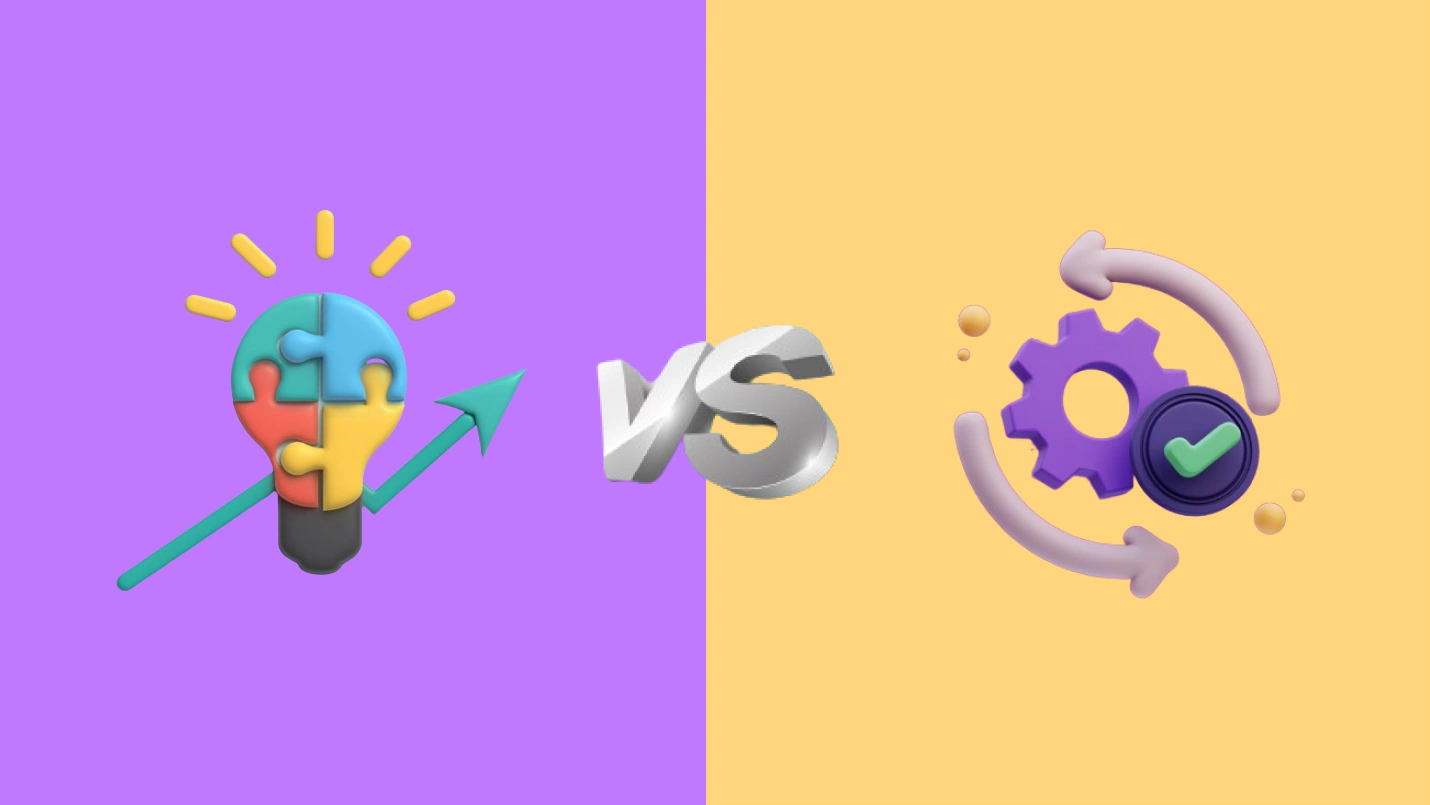With the expansion in technology and more industries opting for Agile Product Development, roles like Product Managers, Product Owners, and Scrum Masters are more in demand and open for hire globally.
Since Product Owners and Product Managers both work towards the same goal but follow a different methodology of skillset, responsibilities, and functioning to reach them, it’s easy to get confused.
What is the difference between a Product Owner & a Product Manager? What are the different skill sets and strategies? How does Scrum Master take over?
These are a few of the many questions surrounding the new and the existing professionals every day.
A clear distinction says the Product Manager plans what to build next, and the Product Owner contributes towards developing and building that product and Scrum master helps the team use Scrum to build the best possible product.
Let’s unpack them in detail.
History of Product Management
The modern-day profession, product management, can be traced back to 1931 when Neil H McElroy at Procter & Gamble wrote a memo on Product Management as a justification to hire more employees.
In his 800 word memo, he laid out the classified and straightforward description of “Brand Men”, which held people for a brand’s absolute responsibility- tracking sales to managing the product, advertising, and promotions.
The transformation of Procter & Gamble into a brand-centric organization led the post of “Product Manager” to come into power. Later in the early 40s, two of Mc Elroy’s mentees, David Packard and Bill Hewlett, carried forward the concept of brand management.
The duo adopted brand-centrism as the mainstay of the organization at Hewlett-Packard. HP became the first autonomous company carrying out the first line of Product Managers.
While facing the market challenges, the customer-centric approach is said to be an eminent reason for the growth and success of HP in consecutively 70 years in a row.
Set out to build a company and make a contribution, not an empire and a fortune.
– David Packard & Bill Hewlett
What is Product Management?
The fundamental question surrounds, what is Product Management? Now, this is a common expression even from the experienced people from the business.
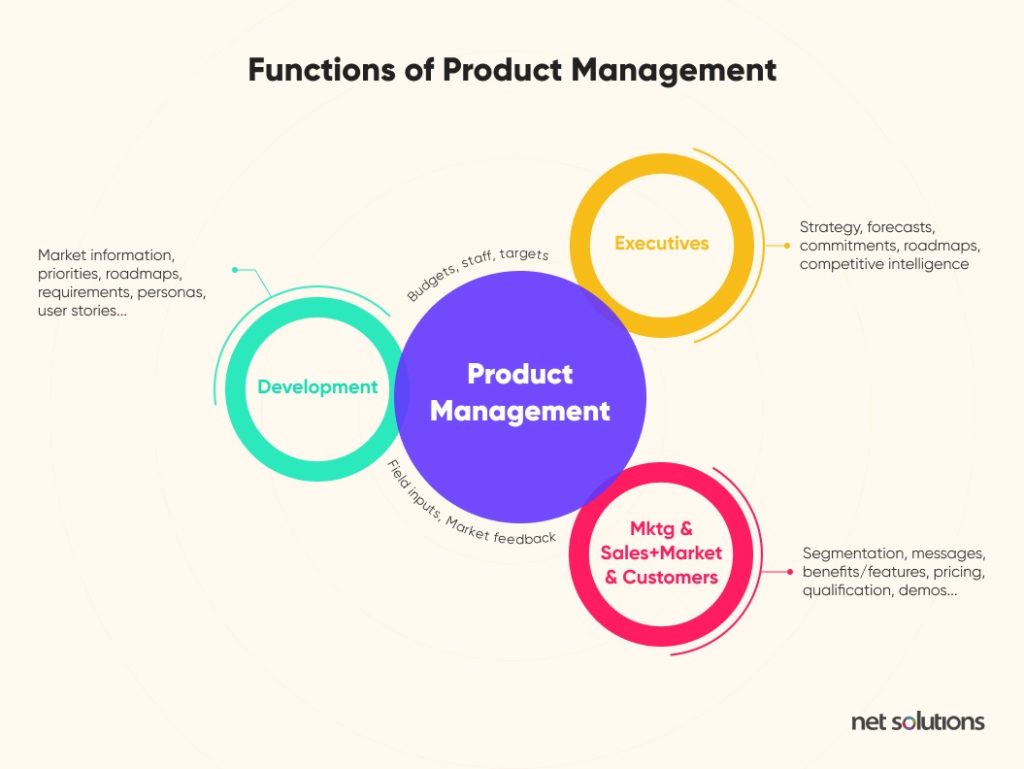
The reason being, Product management encompasses a wide range of roles & responsibilities. “It is an exercise to build once and sell many times.”
Product management is the strategic planning within an organization that is responsible for the product’s overall success. The process looks after driving the development, market launch, and continual support and improvement of a company’s products right from product development, planning, business, verification, pricing, forecasting, and product launch.
Managing the whole product lifecycle also includes staying updated with the Product’s features, warranty, support and channel sales, etc.
How Agile came into the function?
Product Management guides a product through multiple stages. Agile is a more flexible approach since it is more fluid than traditional approaches such as linear and waterfall development.
The idea is to set product strategy and create product roadmaps in an agile environment. It encourages an adaptive approach to product planning and implementation to respond to feedback and build products that customers love quickly. Agile comes out to be an essential asset because of its ability to deliver value faster with more excellent quality and predictability and its ability to respond to change quickly.
Scrum is one of the most widely used methodologies and a subset of Agile. It is the most widely-used and lightweight process framework for agile development.
What is Scrum?
Scrum is a framework that enables employees and team members to self-organize themselves, make changes quickly, and work in alignment. Scrum encourages employees to work together, learn through experiences, and provides an opportunity to track their progress and improve continuously. It allows the team to work on complex projects effectively and deliver high-value products.
While Scrum is most popular among software development teams, its principles and lessons offer several takeaways to all kinds of teamwork. It’s simple, straightforward, and offers easy implementation to handle projects.
This Agile development management framework describes a set of tools for meetings, discussions, task allocation, and progress trackers that help teams structure and manage their work.
Benefits of Agile Product Development
Agile has smoothened the ability to respond to shifting market conditions and quickly incorporating new technologies. Agile has provided a fresh outlook to the product managers on planning, executing, and building products.
Once the requirements are handed to the development team, making changes is complex and quite time-consuming. With Agile Product Management, the above situation is handled smartly; this provides the guidelines as to the type of instructions and requirements one wants. You’ll want to have policies for the kinds of product lines you wish to have at each stage of the product life cycle.
With agile product development, the essential performance components can be worked out in a target-oriented manner, revised flexibly, and fine-tuned to sales requirements and target group interests.
What is the difference between a Product Owner, a Product Manager & Scrum Master?
Delivery and optimization are the critical aspects of any company. Ensuring the product’s smooth functioning and delivery is a common goal for the Product Manager and Product Owner and Scrum Master.
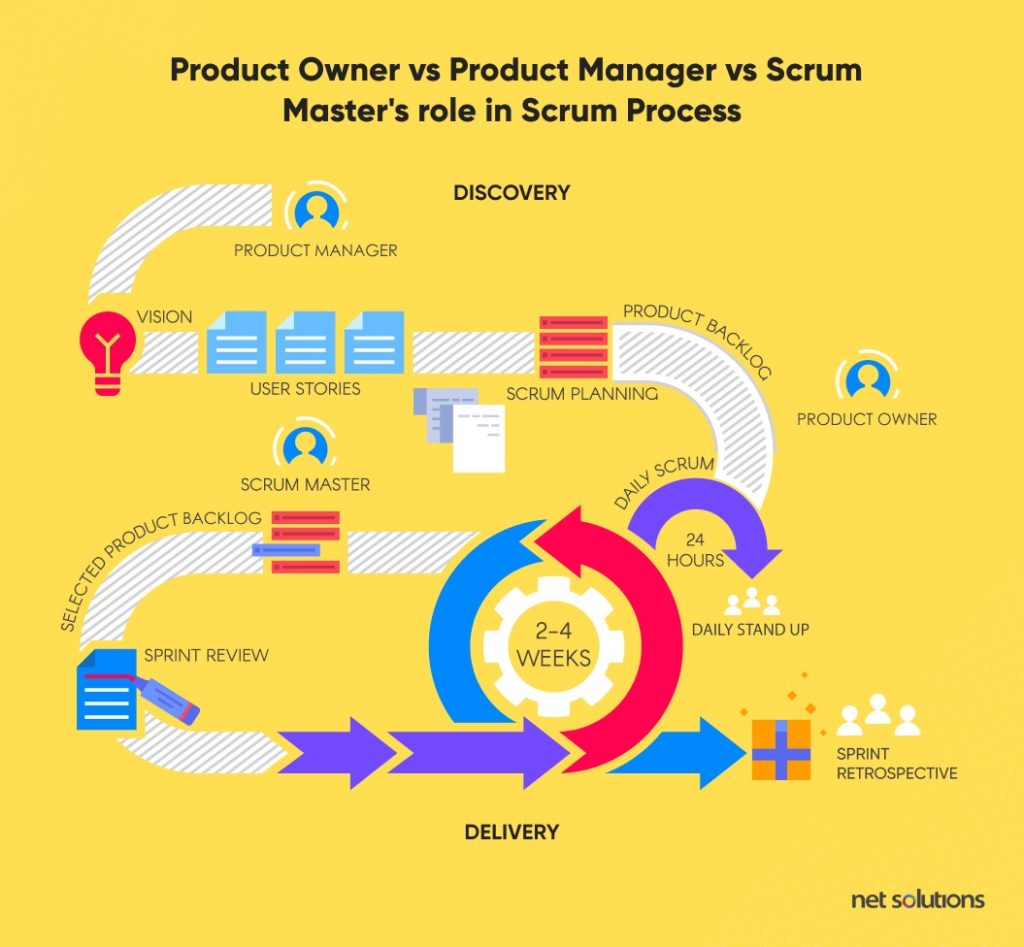
Product Owner vs. Product Manager vs. Scrum Master: Definition
Defining a product owner vs a product manager can be challenging as it involves many factors. Moreover, a fragile line separates the functioning of both the authorities.
Both work for the same goal to build and improve products that create meaningful value for customers and all stakeholders within the company.
The product manager works on the user’s need, prioritizes what to build next, and aligns the team around a product roadmap.
Over the past few decades, the title of Product Manager has grown into popularity and is multi-functional. Moreover, expanding its exercise from being responsible for product development within an organization to a more cross-functional role with overall accountability, the change has been dynamic.
The Product Manager is accountable for the smooth and productive functioning of all the products within the organization.
On the other hand, as companies are leveraging Agile software Development and adapting Agile for over a decade now, product owners’ role is increasingly evolving.
The product owner maximizes the product’s value by creating and managing the product backlog. They create user stories for the development team and communicate the customer’s voice in the Scrum process.
The Product Owner entails a more close relationship with the product and the development team.
What is a Product Manager?
The Product Manager is a holistic and highly strategic person. They are accountable for the entire Product life cycle and adopt a more outward view. Due to Product Managers’ dynamic and varied nature and responsibilities, they are often entitled as the “mini-CEOs” of any organization. They handle the product line right from the invention to the selling.
Product Managers set the product vision and strategy, analyze the market and competitors, and engage with customers to better understand their requirements.
- Creates the product’s long-term vision and clarity.
- Exercises Product Marketing.
- Responsible for long-term perspective.
- Acts as a product visionary, team champion, and strategic leader.
- Advocate for funding and managing the budget.
Importance of Product Management:
- A fully optimized product manager could increase company profits by 34.2%
- 81% of respondents said they measure the success of their products
- 54% of product people are responsible for a mix of different type of products
What is a Product Owner?
The Product Owner is a member of the Agile team, responsible for working with the Product Management and the company’s Stakeholders. The product owner takes a more internal and technical approach. They support the development team by gathering requirements, creating user stories, and prioritizing the product backlog.
- Smoothens and prioritizes the production process, ensuring that the development team has clarity over the next step.
- Acts as a communication proxy between the customer and the development team.
- Attends team coordination meetings like Agile & Scrum to ensure the development work is well aligned with the road map.
- Stays involved with online testing efforts.
- Maintains the team backlog.
What is a Scrum Master?
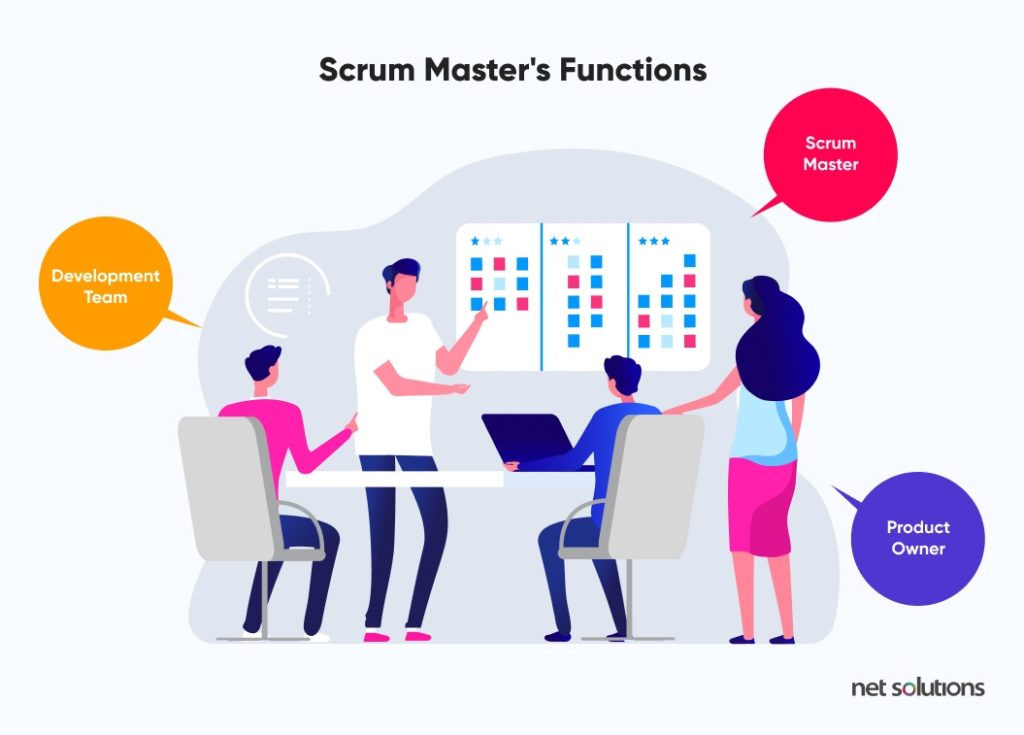
The Scrum Masters are accountable for Scrum Team’s effectiveness. As described in the Scrum guide, A scrum master is responsible for establishing Scrum. This is facilitated by teaching and training everyone about the work methodology of Scrum, how it works, and Scrum theory within the team and organization.
This is important to understand; Scrum Masters are only responsible for making the process and guide the team through the scrum process with their expertise.
87% agree that Scrum improves the quality of work-life for their Teams.
Product Owner vs Product Manager: Let’s Clear the Confusion
These two titles often lead to confusion, even for the most experienced people. However, both the job roles aim for the overall benefit and meaningful impact for the customers and stakeholders.
There is no universally accepted definition separating both the titles. It widely depends upon the company’s size for their respective requirement. For example, a startup/ small business may not require the particular functioning of the Product Owner & Product Manager.
While for a larger organization, the requirement of both the roles is significant, ensuring smooth functioning and proper management at their individual ends.
The Product Manager can perform the Product Owner’s responsibilities and vice versa- depending upon the size.
It is crucial to understand how these roles overlap and differ from each other. It is also essential to understand each role’s essence and work closely as a tightly knit team to derive the best results.
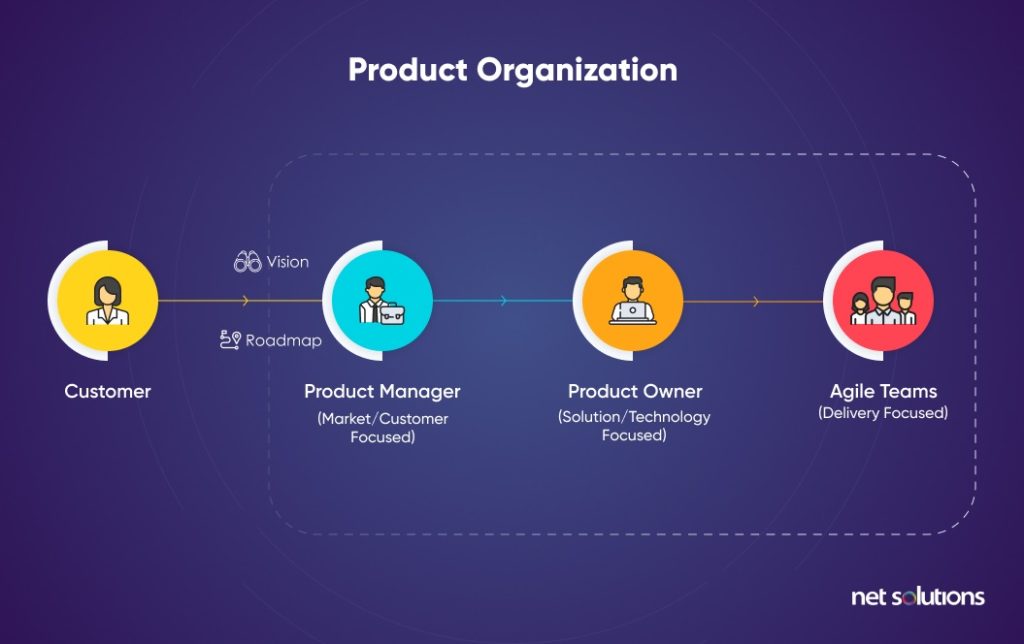
Product Owner vs. Product Manager vs. Scrum Master: Responsibilities and Role
The roles of Product Owners, Product Managers, and Scrum Masters seem similar but are significantly more different. Product Owner and Scrum Master are roles both defined initially as part of the Scrum methodology in the early 2000s. While Product Managers have been around for half a century.
Product Manager Roles & Responsibilities
A product manager is responsible for setting the vision and strategy. They define the release process and determine the cross-functional sections essential to bring the product/ feature to market.
Product managers work with other members to determine a successful and complete product experience. They are also responsible for managing the exterior tasks and challenges by identifying the customer needs and requirements and planning the product to meet demands.
- Produce complete vision for product’s life cycle.
- Deliver the right kind of product that meets customer expectations.
- Ensure the right plan & strategy for smooth product functioning with team, partners & stakeholders.
- Unite the team around a comprehensive action plan.
- Develop the business case for the product and maintain the road map.
Let’s see what the statistics say-
- 56.5% say that product management is established but is still developing inside their organization.
- 43.3% say that product managers are seen as leaders and key differentiators inside their organization
- 26.6% say that PMs have a clear role, but others don’t understand it
- 46.2% of product managers are individual contributors, 43% are managers
- 69% believe that product management is a leadership role
Product Owner Roles & Responsibilities
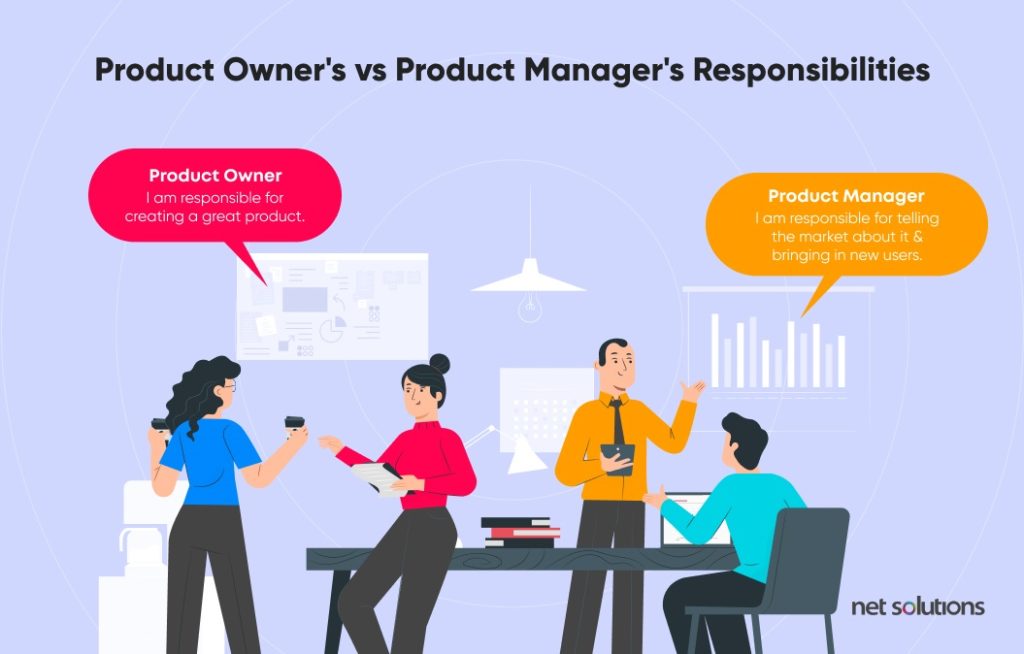
The product owner oversees the development team. They manage the product backlog and write requirements and user stories. They are also responsible for presenting the customer’s needs to the development team.
Product owners are more tactical in practice and work intently with delivery teams to ensure they build the proper functionality in a given time.
Product owners keep customer’s needs at the forefront, and on each Sprint, they keep instructing the engineering and designing teams with their next task and its details.
They are keen on the product structure and arrange one-to-one interaction with the developers and the UX designers to ensure perfection in the final product.
- Organize work in the backlog.
- Conducting sufficient analysis to ensure requirements are ready to be worked.
- Attending Scrum Meetings to keep working on the track.
- Manages sprints and participates in retrospectives on the Agile team.
Can a Product Owner Become a Product Manager?
The short answer is yes: A product owner can be a product manager and vice versa.
As discussed earlier, in startups/ small organizations, both roles are performed by the same person. This implicates that the Product Owner can become a Product Manager.
A great product owner is an asset to any company. Product Owners are intimately familiar with the products, customers, and technology. They are excellent at prioritizing and organizing.
| Requirement of Product Owner | Requirement of Product Manager |
|---|---|
| A small team consisting of less than 20 people. | A growing business with multiple products and a large team. |
| While facing project tackling, reporting, and development issues. | Stakeholders, Partners, and customers are having issues with product quality. |
| Development team holds confusion and lacks clarity regarding the product. | Receiving complaints regarding the final product from Customers. |
Development should not be the only focus area for Product Owners. Instead, the Product Owner is also involved in all other aspects of the product management profession, e.g. vision, strategy, pricing, budgeting, sales, marketing, and operations. This makes them already capable of handling the responsibilities of Product Managers to some extent.
Scrum Master Responsibilities & Roles
There stands a common confusion that considers Scrum Masters and Project Managers the same. This is true to some extent, but not entirely. Even if both the authorities overlap a few roles and responsibilities, they are different from each other.
Responsibilities of Scrum Master:
- Scrum master ensures successful team operation and interaction.
- Scrum Master helps Product Owner to manage backlog effectively.
- A Scrum Master contributes majorly to resource management, quality management, and scope management knowledge areas.
- Scrum Master protects the team from outside disruptions and distractions.
- Scrum Masters work on smaller scrum teams and are responsible for performances only for their smaller groups.
Product Owner vs. Product Manager: Skills
To become a successful Product Owner or a Product Manager, one needs to hone the right set of skills. These required skills will make operations run smoothly and contribute to generating more business and customers.
Product Owner Skills
Storyteller:
Delighting a customer is a large part of the Product Owner’s job, and this is done through excellent product storytelling.
A great product owner shall go beyond the mechanics of chopping up a user story into the product backlog and sending it to developers. As a product owner, your mission is to think about what will transform that story into a product feature that — you guessed it — delights the user.
Problem Solver:
In Product development, issues will arise over everything, from action to delivery. A good product owner needs to have the strength to engage with the development team when conflicts occur.
A fundamental responsibility is to have the product moving forward, and conflict resolution is a valuable tool to accomplish this.
Good Communication Skills:
This goes unsaid for any position that stays in authority. The best product proprietors are fundamentally natural communicators. The product owner should be astounding about speaking and understanding both the customer’s and developer’s dialects.
Information Liaison:
Product Owner is responsible for Product Backlog and acts as a middleman between the development team, stakeholders, and customers.
The Product Owner ensures a smooth flow of information between the developers and the people they need to communicate to (stakeholders, other developers, etc.) to have the final product always correct.
Product Manager Skills
Leadership Skills:
A Product Manager is responsible for putting down the long-term vision, product road map and defining and prioritizing the outcomes to show success.
The Product Owner should be capable of guiding and leading the teams in the right direction.
Technical Expertise:
Product Managers are often required to work with engineers, designers, and other tech resources to turn the vision into a product. Having sound technical knowledge helps them navigate through the requirements and the changes better.
Good Collaboration Skills:
Now, this is a part of Communicating as well. Product Managers are continuously required to maintain the exterior relationships of the company. This requires collaborating with the stakeholders, employees, and customers daily.
Business Skills:
A basic business understanding is necessary, such as handling budgets, profits, cash flow, and product development components. This gives the freedom of decision and change-making without being dependent on external sources.
Product Owner vs Product Manager: Strategy
It’s clear; most small businesses require a Product Owner. And to the other hand, Product Managers are responsible for growing the business.
Vision defines the goals for a product, strategy is a way to achieve them and sets main milestones.
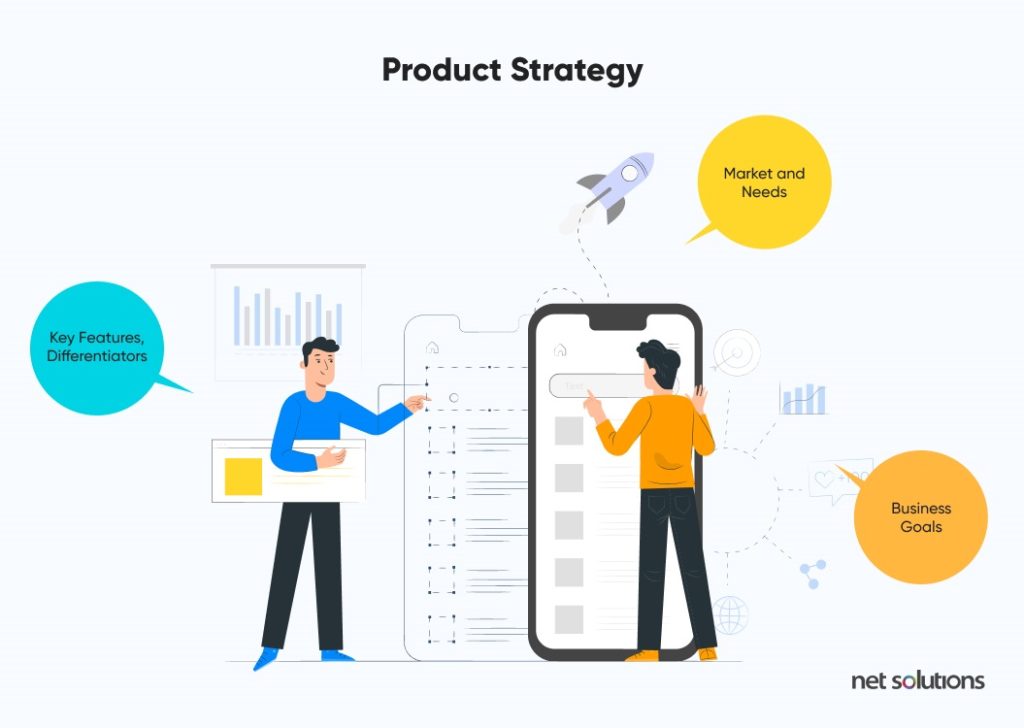
Product Owner- Strategy
As we discussed, the Product Owners handle the inner workings and communication and the Product Managers manage the exterior relationships. This difference in responsibility plays a crucial role in determining respective strategies.
The Product Owner is more operational than strategic. They communicate the project features to the development team and work towards promoting the development strategy. Rather than focusing more on the roadmap. Rather than building or maintaining the product roadmap, they work to support the product strategy set by the VP of product or the product manager.
Product Manager- Strategy
Product Managers own the long-term vision. They manage the product roadmap and communicate the product strategy with the rest of the team. They make sure everyone understands how they contribute to the broader initiative.
As a Product Manager, one must elevate the business-critical strategic components of a product leadership role into their schedule on a regular–even daily–basis.
The key aspect of most product managers is setting a product strategy. It’s closely followed by crafting a clear roadmap and overseeing its completion.
| Product Vision | Acts on behalf of the customer for the product vision. | Conservator of the product vision on behalf of business sponsors. |
| Responsibility |
Customer Delivery Product Vision Creates User Stories |
Optimize development process and product strategy. Advocates customer needs to the development team. Creates long-term vision and strategy. |
| Communication Requirements | Engagement with the team, product manager, and customers showing ongoing product value & success. | Engagement with business owners, senior managers, stakeholders, and product owners, and the team. |
| Key Skills |
Marketer Skills Decision Skills Negotiation Skills |
Leadership Time Management Risk Management |
| Strategy |
Strategizes component & Subsystem planning Technical & Tactical- Inbound |
Product system & Portfolio planning Strategic & Outbound |
| Overall focus |
Detail Oriented Product Quality Short to mid-term focus |
Highly strategic Ensures timely product delivery Grand Vision |
Conclusion
Ultimately Product Owners and Product Managers work for the same goal, to provide value and a wholesome experience to their customers. And both are equally essential for managing the complete ecosystem, work environment, and product delivery in a defined time frame.
A constructive relationship grows from clearly defined expectations and regular communication. With companies from all sectors adopting Agile Product Development, both Product Owners & Product Managers are likely to function for a longer time.
What is essential is that Product Owners and Product Managers work accordingly well with their roles and responsibilities within the Product Management structure.
With the expansion in technology, more responsible people will be required to stay ahead of the curve.


